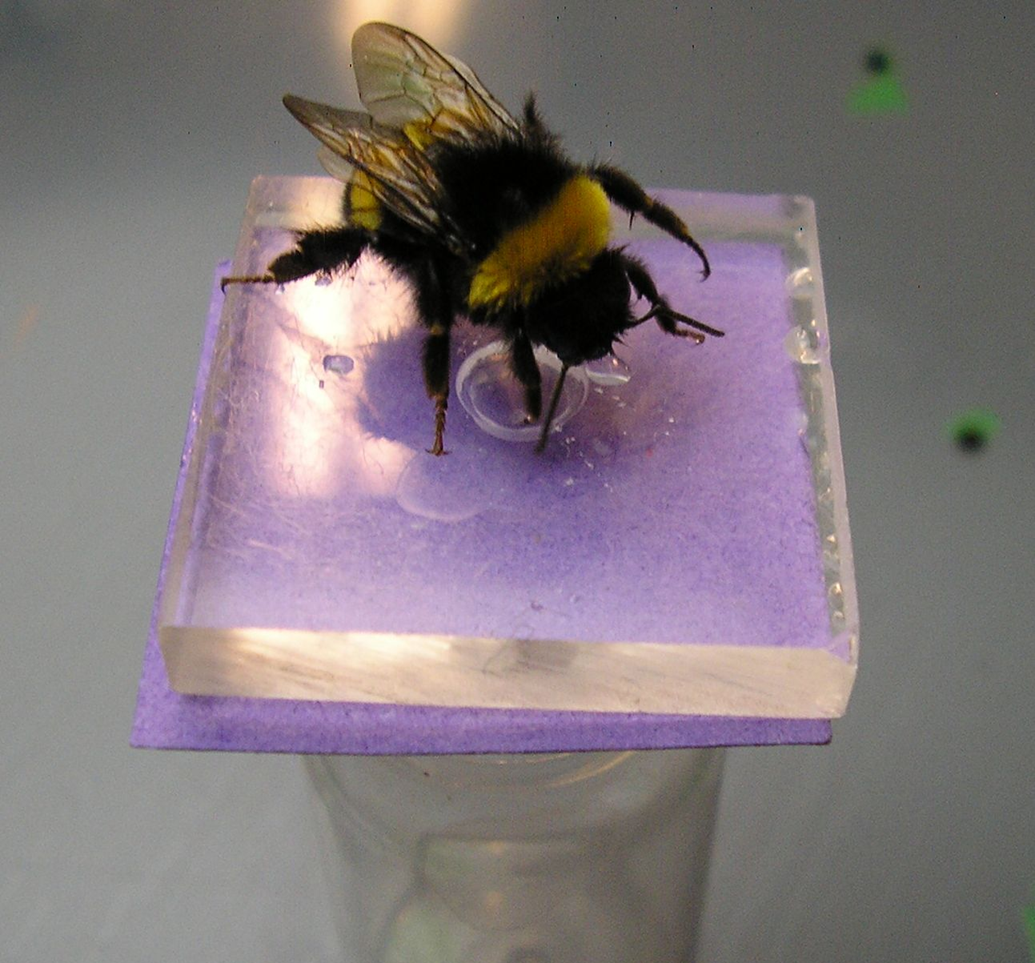
New bumblebee research from scientists at the Natural Resources Institute (NRI) and Queen Mary, University of London teaches us how bees cope with complex visual environments in nature. Guided by scent and vision, foraging bumblebees are known to continuously seek and collect nectar, however a new paper has found that the bees find it challenging to distinguish the colours of succulent blooms when the transition from broad daylight to leafy shade alters the flower's hue.
"Bees have colour constancy and can correctly recognise colours even if the illumination changes" explains Sarah Arnold, "but there are hints that this wasn't completely perfect and under some lighting conditions they make more mistakes than others".
The new paper in The Journal of Experimental Biology by Sarah Arnold, now a postdoc at NRI, and Professor Lars Chittka of Queen Mary, University of London, investigates the insects' abilities to distinguish similarly coloured flowers in bright and shady conditions, such as are often found at the woodland's edge.
The bumblebees were studied in an indoor wooden 'flight arena', where they could forage under controlled lighting conditions, and learn to visit coloured plastic flowers.
It was found that certain types of light, such as the green light filtered through leaves, confounded bees' colour discrimination ability, making it harder for the bees to tell apart purple plastic flowers, which contained sweet sugary rewards, and mauve flowers, which had bitter quinine placed on them instead. In nature, this could cause bees to make more mistakes when identifying flowers, perhaps visiting unrewarding "mimic" flowers or missing hidden predators.
The researchers also observed that bees new to foraging avoid new illumination types they have not seen before, such as simulated leaf-shade used in this experiment. They then modify their foraging behaviour in response, to try to avoid switching between illuminations too often. However, in a testament to bees' amazing plasticity, as bees in the 'flight arena' grew more experienced at foraging in patchy light they lost this preference and happily moved in and out of different coloured lighting without a problem.
Their findings improve our understanding of how insects, albeit very small, can adapt to our complex and ever-changing world.
Thanks to Kathryn Knight of JEB who reported this paper in Inside JEB http://jeb.biologists.org/content/215/13/ii

